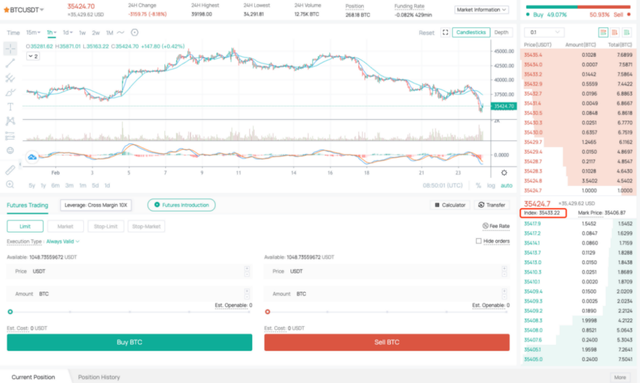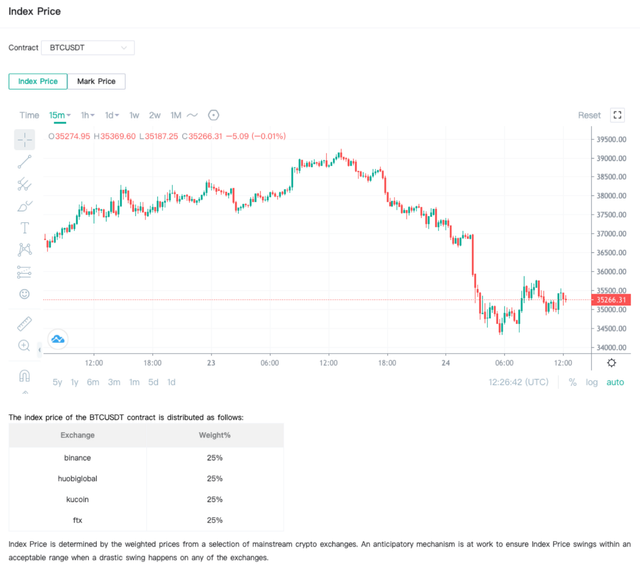Indices such as NASDAQ and S&P are frequent terms in stock trading. Generally speaking, a stock price index is a major indicator that describes the overall price change of the stock market. In the market of crypto contracts, we will also come across the term “index”. For example, in a CoinEx contract market, there is an apparent label called “Index” on the right side of the trading interface. What does index mean in this context?

In the crypto space, the index price is a mechanism introduced by exchanges that help prevent losses arising from abnormal price fluctuations on a single platform. The index price specified on a crypto exchange is often determined according to the price data recorded by leading exchanges in terms of trading volume through weighted calculation. In this way, the index price could reflect the true market price more fairly, thus avoiding malicious liquidation as the result of price manipulation by a single exchange.

On CoinEx, the index price accounts for the weighted prices from a selection of mainstream exchanges and is updated every 5 seconds. If the pricing crypto of a trading pair cannot be found on these exchanges, CoinEx will convert the crypto into one that is supported by the index price according to the latest exchange ratio. Where the latest price and trading volume recorded by one of such exchanges are not updated in 15 minutes, or if it is undergoing system maintenance, the exchange will be temporarily excluded and its weight will be shared by the remaining exchanges.
For example, the index price of CoinEx’s BTCUSDT contract is subject to the price recorded by Binance, Huobi Global, KuCoin, and FTX, each accounting for 25% of the total weight.
As such, the index price = BTC spot price on Binance25% + BTC spot price on Huobi Global25%+ BTC spot price on KuCoin25%+ BTC spot price on FTX25%.
Suppose KuCoin is going through system maintenance, the index price would be temporarily determined by the price on Binance, Huobi Global, and FTX. In this scenario, the index price = BTC spot price on Binance33.33% + BTC spot price on Huobi Global33.33%+ BTC spot price on FTX*33.33%.

Traders should remember that there are three prices in contract trading. The first one is the above-mentioned index price, which reflects the reasonable price of the crypto asset on the global market; the second is called mark price, which is used to determine the reference price of forced liquidation and stop loss/stop profit. Mark Price = Index Price*(1+Funding Rate). On CoinEx, forced liquidation will only be triggered when the mark price reaches the liquidation price. The third one is named market price, which indicates the price determined by the buy/sell orders in the current contract market.
For instance, if you’ve got a BTCUSDT long contract with a liquidation price of 30,000 USDT, your position will not be liquidated when the market price reaches 30,000 USDT while the mark price remains at 30,010 USDT. On the other hand, if the mark price hits 30,000 USDT (the liquidation price) while the market price stands at 30,002 USDT, the contract will be traded at the market price instead of the mark price
The index price indicates the reasonable price of a crypto asset on the global market in a more intuitive manner. If only one exchange is accounted for, then the price might be subject to manipulation, which will result in abnormal price swings, and the manipulators will profit from the forced liquidation of other users. The index price of perpetual contracts on CoinEx is pegged to multiple leading exchanges in terms of trading volume, which effectively prevents price manipulation and offers traders safer and more satisfying trading experiences.